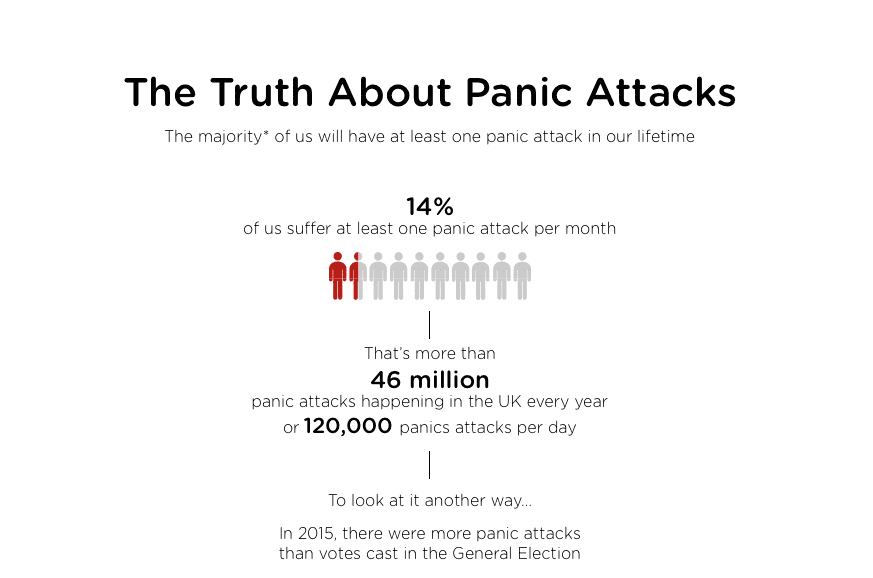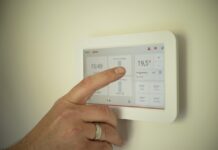Swansea is the UK’s panic attack hotspot, followed by Wolverhampton, Cardiff, Glasgow and Birmingham, according to a new study into panic disorders, involving 3,000 UK adults.
The research, conducted by a team headed by panic disorder specialist Dr. David Sinclair, founder of bcalm, also revealed:
- The majority (52%)* of us will have at least one panic attack in our lifetime (that’s more than 46 million panic attacks happening in the UK every year, or 120,000 panic attacks per day).
- Swansea has most panic attack sufferers per head – Almost 1 in 10 suffer weekly panic attacks
- 14% of us suffer at least one panic attack per month.
- Women are significantly more likely than men to suffer a panic attack, 59% of women have had at least one panic, attack vs 44% of men.
- 18-24 year olds are most likely to suffer regular panic attacks. 18% of 18-24 year-olds in the study said they have panic attacks at least once a month and 7% of those reported having weekly panics attacks.
- 35% of panic attack sufferers say they’ve been triggered by crowded offices.
- 46% of panic attack sufferers have had a panic attack on their way to work.
Panic attack hotspots:
| City | Percentage of residents suffering at least one panic attack per week |
| Swansea | 8.16% |
| Wolverhampton | 6.98% |
| Cardiff | 6.67% |
| Glasgow | 6.56% |
| Birmingham | 5.85% |
| Brighton and Hove | 5.80% |
| Newcastle | 5.78% |
| Portsmouth | 5.77% |
| Bristol | 4.62% |
| Manchester | 4.29% |
| Liverpool | 4.04% |
| Oxford | 3.96% |
| Belfast | 3.39% |
| London | 3.21% |
| Norwich | 2.56% |
| Southampton | 2.35% |
| Edinburgh | 2.17% |
| Sheffield | 1.86% |
| Leeds | 1.83% |
| Aberdeen | 1.75% |
| Leicester | 1.54% |
Panic attacks and the workplace
- 35% of panic attack sufferers say they’ve been triggered by crowded offices.
- 46% of panic attack sufferers have had a panic attack on their way to work.
- Strong link between carbon dioxide levels and panic attacks, busses, trains and lifts have elevated Co2.
- Poor airflow and ventilation cited as the biggest environmental trigger for panic attacks.
27% of panic attack sufferers get no support from their employer. 9% reported getting some support, but felt their employers could do more.
Although sufferers would like more support at work, the majority of panic attacks are going unreported. For every 104 panic attacks**, there’s just one reported case of work related stress, anxiety and depression.
35% said they’d like their employer to provide a ‘safe space’ environment for respite from triggers, 26% would like their employer to improve airflow and ventilation in their workplace, 13% said adjusting the layout of their office could help their panic attacks and 11% said minimising loud noises would help.
Poor airflow and ventilation is the number one environmental trigger for panic attack sufferers. Almost a quarter (23%) of panic attack sufferers said lack of good airflow and ventilation could trigger a panic attack.
Perceptions of panic attack sufferers
A significant number of panic attack sufferers are self-conscious about their condition.
13% of sufferers reported that they felt other people didn’t believe them when they disclosed their condition and 15% said others have told them that they didn’t believe panic attacks were serious. 15% of study participants (including non-panic attack sufferers) say they’ve suspected someone of faking or exaggerating a panic episode.
Quote: Dr Stephen Cox, the inventor of bcalm and a board–certified psychiatrist who has specialised in anxiety disorder for more than thirty years, believes reducing environmental triggers could help people who suffer from panic attacks.
“Medical research had shown repeatedly that when people with panic disorder breathe air with elevated carbon dioxide, panic attacks result.
“Carbon dioxide is 100 to 500 percent higher in planes, tubes, lifts, in meetings and and in cars, so it stands to reason that commuting and being at work can increase the chances of a panic attack. Two separate, double blind medical studies in two different countries, done by two different investigators have demonstrated that carbon dioxide pollution filters do help reduce panic attacks.”
Help keep news FREE for our readers
Supporting your local community newspaper/online news outlet is crucial now more than ever. If you believe in independent journalism, then consider making a valuable contribution by making a one-time or monthly donation. We operate in rural areas where providing unbiased news can be challenging. Read More About Supporting The West Wales Chronicle
























